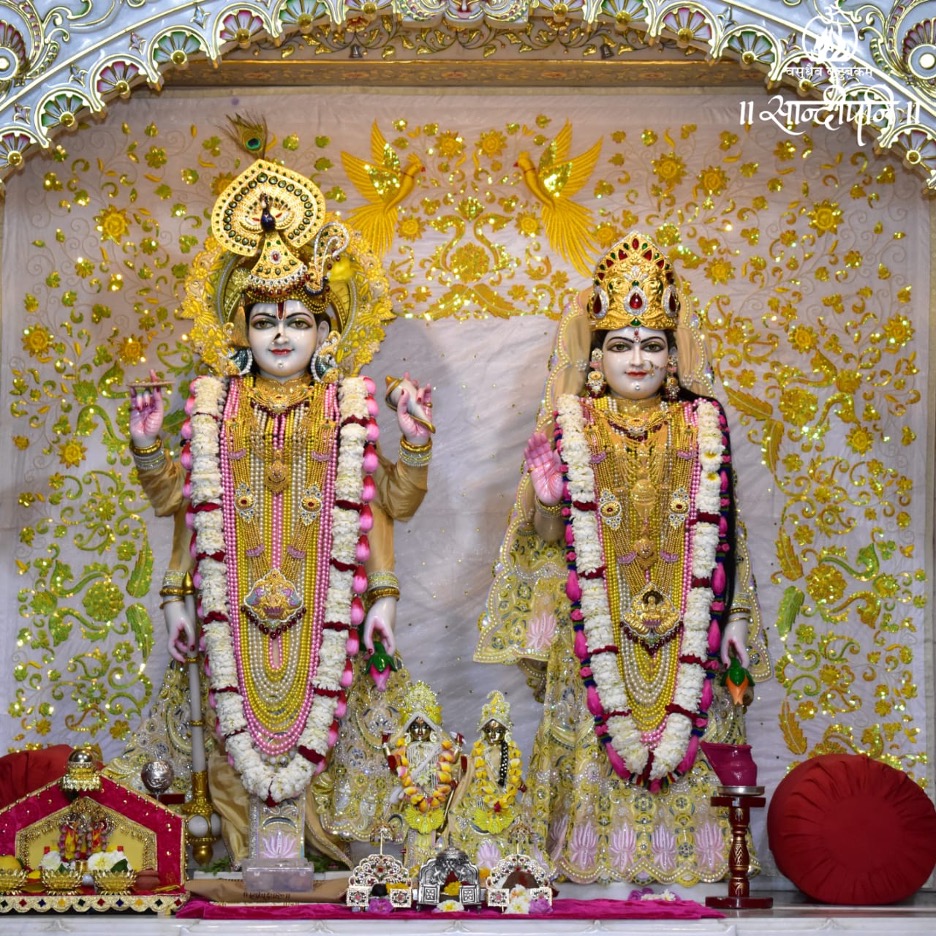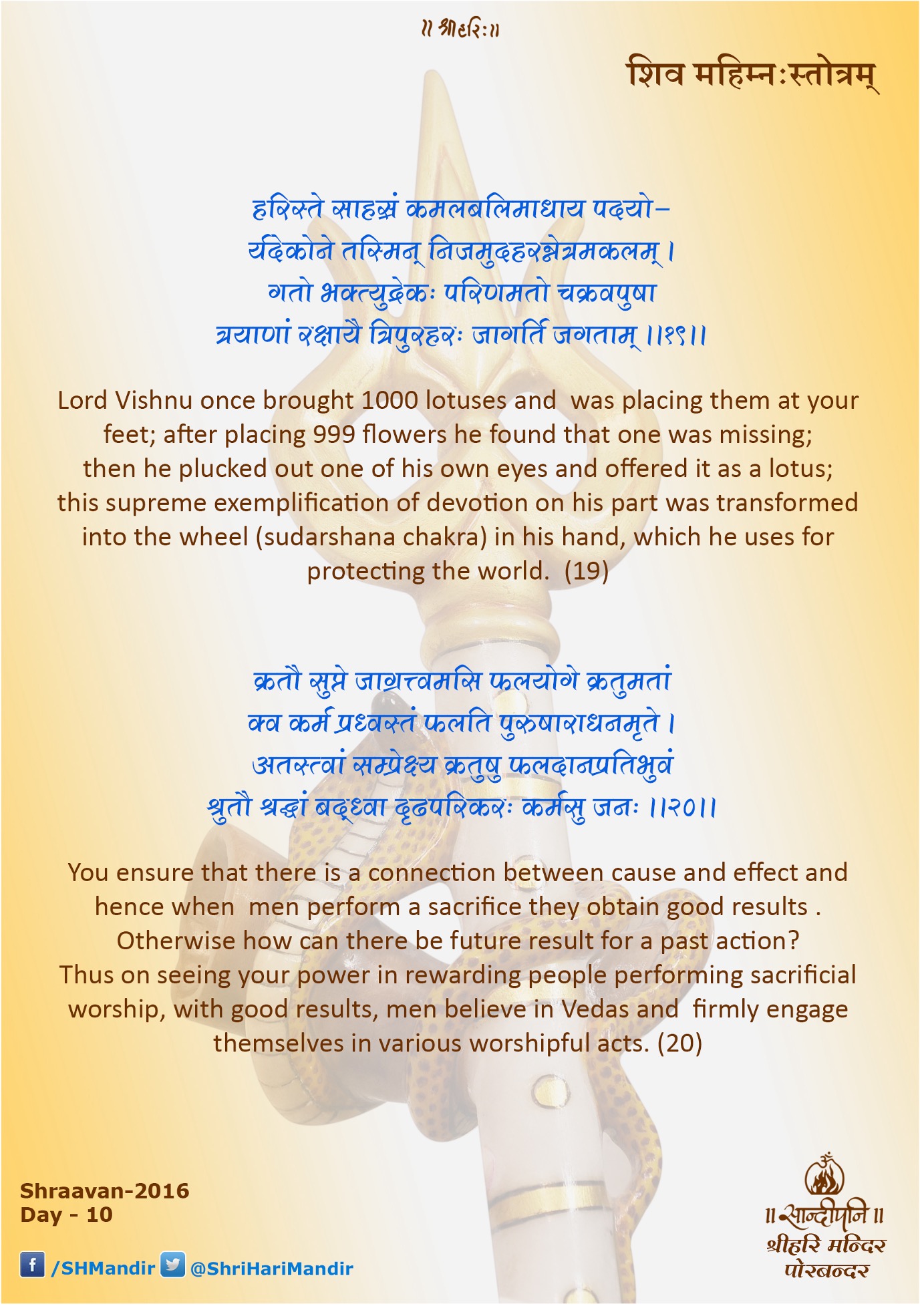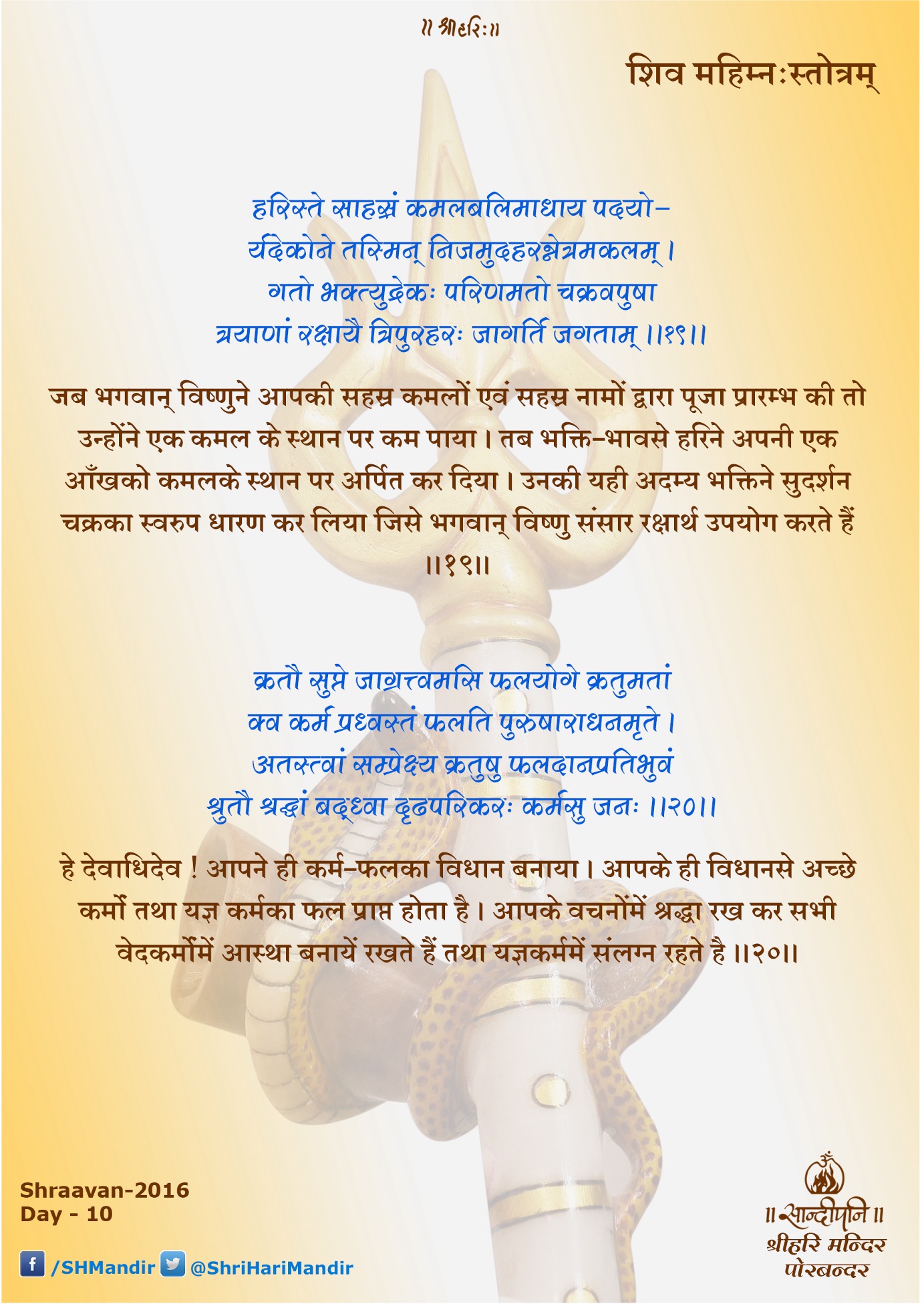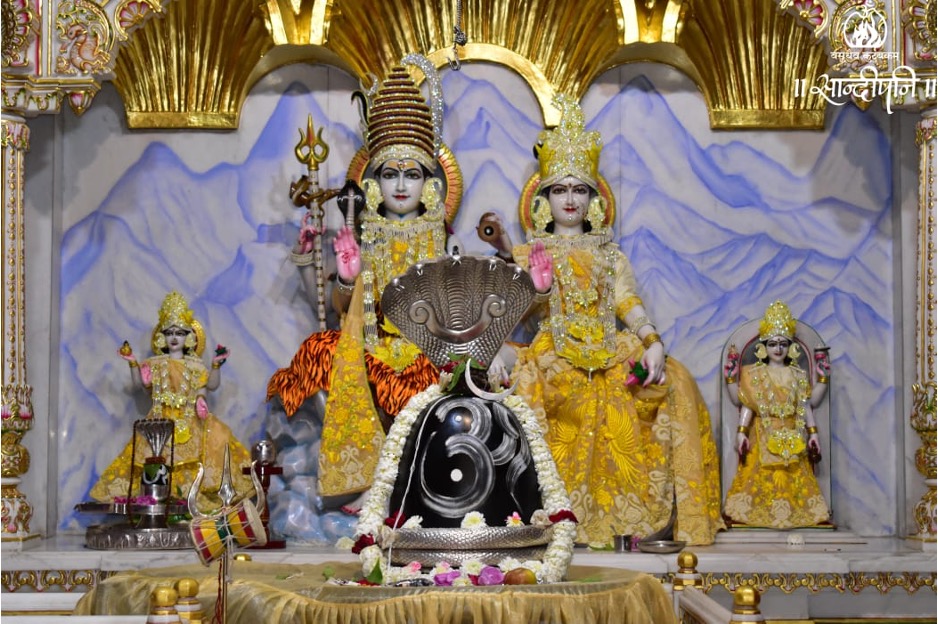A Special Offering of Lotuses to the Lord

The divine Hari-Har Love Story by Pujya Bhaishri Rameshbhai Oza
Lord Śiva is considered to be the greatest ‘Vaiṣṇava’ (or devotee of Lord Viṣṇu) and so too is there no greater ‘Śaiva’ (or devotee of Lord Śiva) than Lord Viṣṇu. This mutually excellent and deeply profound love of the Lord of sustenance (Viṣṇu) for the Lord of destruction (Śiva) is expressed in unique episodes throughout the scriptures. Behind these stories (Kathās) lies a deep significance as the cycle of creation-maintenance and destruction (for renewal) is imperative and continuously ongoing in all of material existence.
Lord Śiva Himself reveals the greatness of Lord Viṣnu’s love for Him in this beautiful episode whilst worshipping. Let us listen to this story and understand the true significance behind it, as described by Pujya Bhaishri Rameshbhai Oza during the Shrimad Bhāgavat Katha at Lord Shiva’s Nageshvar Jyotirling (near Dwarikadhish, March 2021).
A special resolve to please the Lord

Lord Viṣṇu maintained a regulated daily practice (called a ‘niyama’) to worship His beloved Lord (Iṣṭa), Lord Śiva with an offering of a thousand golden lotuses every single day.
One day, the Lord desired to perform an extra-special form of worship and so He released the sacred water signifying his well-considered mental resolve (called a ‘saṅkalpa’) to certainly offer one thousand lotuses along with the five-syllabled mantra ‘Oṃ Namaḥ Śivāya’ to Lord Śiva, simply for the pleasure of His beloved.
Daily worship is called ‘nitya karma’ whilst a special form of worship performed with an exceptional wish to worship and please is referred to as a ‘naimittika karma’.

What is a Sankalpa?
A saṅkalpa is a ‘blueprint’ of a plan or a project report which thoroughly examines all factors prior to committing to an undertaking. After assessing the feasibility and eligibility of the activity to be undertaken, the nature of the work and the doer to all be appropriate, a resolve is taken by pledging one’s name, lineage (gotra), physical location, time at the time of declaring one’s resolve (with lunar asterisms for precision), activity to be completed, and also stating aloud one’s intentions for the action.
Do intentions matter in Devotion?
Two categories of devotional activities or worship may be performed – one to please the Lord and fulfill a desired objective with His blessings (called ‘sakāma ārādhanā’) and the second simply to please the Lord (called ‘niśakāma ārādhanā) in which a topmost devotee seeks no gain other than the spontaneous joy of worship itself.
As the topmost and most excellent devotee of Lord Śiva, Lord Viśṇu worships with no personal desire other than for the pleasure of His Lord, seeking nothing from the Lord save the Lord Himself! Upon the path of action and devotion, the quality of one’s purpose is as important as the quality of one’s actions. He also does not delegate any of his Sevā to his own attendants and performs all devotional activities of going to the lake to collect flowers or preparing garlands all by himself.
(This spirit of Sevā is also seen in the personality of param Bhāgavat, King Ambarīśa in the Śrimad Bhāgavatam, who would sweep and clean the Lord’s temple himself- considering no task to be too small or menial).

Challenges reveal Character
Understanding the unparalleled greatness of Lord ShriHari’s love for Him, Hara wished to reveal this to us all and so He enacted his divine pastime. Unseen, He quietly removed a single lotus from the one thousand lotuses prepared to offer which ShriHari had Himself travelled on foot to collect; carefully selected; and lovingly plucked one-by-one with His own hand.

After offering 999 lotuses with love and attention, Lord Viṣṇu realizes that there is one lotus short of the intended 1000. Once a saṅkalpa is undertaken, one can not leave their seat until the said worship is complete. ShriHari recalled that His devotees sing loving hymns of praise, or stutīs, which describe each of His limbs to be lotus-like.
Which Lotus is fit to be offered to the Lord?
He began to reflect upon which lotus-limb would be most suitable to offer the Lord.
Would His lotus feet be most appropriate?
No, because how then would He continue to walk daily to collect articles for worship of His Lord?
Would one of His lotus hands be most appropriate?
No, because whilst He could select the flowers with one hand, how then would He snap the lotus stalk intended for worship without His second hand?
Would His Lotus mouth be most appropriate?
No, for how then would He be able to sing the glories of his Lord?
What, then? ShriHari then realized that He could easily offer one of his lotus eyes to the Lord in worship and still continue to perform his daily devotional activities and without any hesitation, but rather filled with great delight, the Lord plucked one of His eyes and offered it to Lord Bholenātha!
hariste sāhasraṃ kamala balimādhāya padayoḥ |
yadekone tasmin nijamudaharannetrakamalam ||
– Śivamahimnaḥ Stotram 19
‘Viṣṇu once brought 1000 lotuses and was placing them at your feet; after placing 999 flowers he found that one was missing; he plucked out one of his own eyes and offered it as a lotus; this supreme exemplification of devotion on his part was transformed into the wheel (sudarśana chakra) in his hand, which he uses for protecting the world’, says the celestial Gandharva Puśpadanta.


Trilocana Lord Śiva, possesses three eyes of the Sun, Moon and Fire. He is easily pleased and a munificent giver who reciprocates with His devotees- He quickly appeared to bless Lord Viśṇu and bestowed the fiery Sudarśana Cakra to Him as a blessing.
Pujya Bhaishri Rameshbhai Oza explains that the true significance of this ‘Kamalārcaṇa’ or lotus flower worship is to dedicate each of our limbs and their activities to the worship of the lotus-limbed Lord.
May my feet walk only for you, O Lord. When one walks for the Lord, that walk becomes a divine circumambulation (or parikramā).
May our hands serve Him by working for His pleasure;
May my mouth speak only of You- singing your glories and speaking of your divine pastimes;
May our eyes seek to see the omnipresent Lord as the divinity which permeates all of existence.

Explore the divine Hari-Har Yatra by traveling from Dwarikadhish to Somnath Jyotirling Mandir in Gujarat. To book your stay at Sandipani Vidyaniketan and enjoy darśana of ShriHari Mandir (Porbandar) email reservations@sandipani.org now.
1 Comment. Leave new
[…] When you look at Lord Rāma’s exalted character- as exhibited in His noble actions, sentiments and thoughts- there is no other Śaiva (or devotee of Lord Śiva) that compares to Lord Rāma. […]